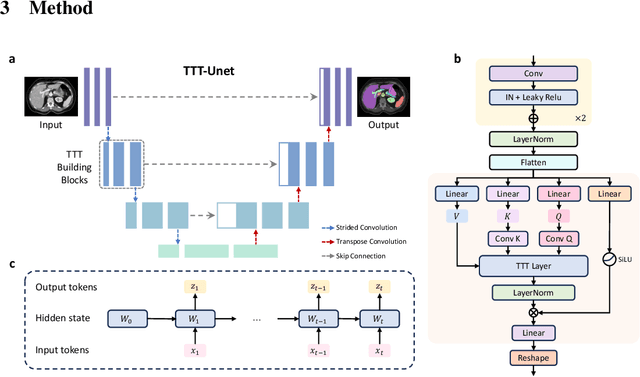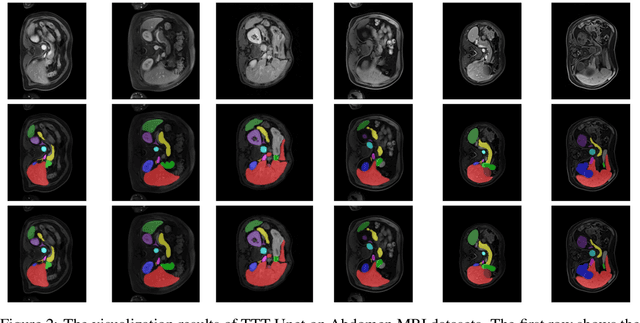Zhengqing Yuan
Social Science Meets LLMs: How Reliable Are Large Language Models in Social Simulations?
Oct 30, 2024Abstract:Large Language Models (LLMs) are increasingly employed for simulations, enabling applications in role-playing agents and Computational Social Science (CSS). However, the reliability of these simulations is under-explored, which raises concerns about the trustworthiness of LLMs in these applications. In this paper, we aim to answer ``How reliable is LLM-based simulation?'' To address this, we introduce TrustSim, an evaluation dataset covering 10 CSS-related topics, to systematically investigate the reliability of the LLM simulation. We conducted experiments on 14 LLMs and found that inconsistencies persist in the LLM-based simulated roles. In addition, the consistency level of LLMs does not strongly correlate with their general performance. To enhance the reliability of LLMs in simulation, we proposed Adaptive Learning Rate Based ORPO (AdaORPO), a reinforcement learning-based algorithm to improve the reliability in simulation across 7 LLMs. Our research provides a foundation for future studies to explore more robust and trustworthy LLM-based simulations.
MLP-KAN: Unifying Deep Representation and Function Learning
Oct 03, 2024



Abstract:Recent advancements in both representation learning and function learning have demonstrated substantial promise across diverse domains of artificial intelligence. However, the effective integration of these paradigms poses a significant challenge, particularly in cases where users must manually decide whether to apply a representation learning or function learning model based on dataset characteristics. To address this issue, we introduce MLP-KAN, a unified method designed to eliminate the need for manual model selection. By integrating Multi-Layer Perceptrons (MLPs) for representation learning and Kolmogorov-Arnold Networks (KANs) for function learning within a Mixture-of-Experts (MoE) architecture, MLP-KAN dynamically adapts to the specific characteristics of the task at hand, ensuring optimal performance. Embedded within a transformer-based framework, our work achieves remarkable results on four widely-used datasets across diverse domains. Extensive experimental evaluation demonstrates its superior versatility, delivering competitive performance across both deep representation and function learning tasks. These findings highlight the potential of MLP-KAN to simplify the model selection process, offering a comprehensive, adaptable solution across various domains. Our code and weights are available at \url{https://github.com/DLYuanGod/MLP-KAN}.
TTT-Unet: Enhancing U-Net with Test-Time Training Layers for Biomedical Image Segmentation
Sep 18, 2024



Abstract:Biomedical image segmentation is crucial for accurately diagnosing and analyzing various diseases. However, Convolutional Neural Networks (CNNs) and Transformers, the most commonly used architectures for this task, struggle to effectively capture long-range dependencies due to the inherent locality of CNNs and the computational complexity of Transformers. To address this limitation, we introduce TTT-Unet, a novel framework that integrates Test-Time Training (TTT) layers into the traditional U-Net architecture for biomedical image segmentation. TTT-Unet dynamically adjusts model parameters during the testing time, enhancing the model's ability to capture both local and long-range features. We evaluate TTT-Unet on multiple medical imaging datasets, including 3D abdominal organ segmentation in CT and MR images, instrument segmentation in endoscopy images, and cell segmentation in microscopy images. The results demonstrate that TTT-Unet consistently outperforms state-of-the-art CNN-based and Transformer-based segmentation models across all tasks. The code is available at https://github.com/rongzhou7/TTT-Unet.
Biomedical SAM 2: Segment Anything in Biomedical Images and Videos
Aug 06, 2024Abstract:Medical image segmentation and video object segmentation are essential for diagnosing and analyzing diseases by identifying and measuring biological structures. Recent advances in natural domain have been driven by foundation models like the Segment Anything Model 2 (SAM 2). To explore the performance of SAM 2 in biomedical applications, we designed two evaluation pipelines for single-frame image segmentation and multi-frame video segmentation with varied prompt designs, revealing SAM 2's limitations in medical contexts. Consequently, we developed BioSAM 2, an enhanced foundation model optimized for biomedical data based on SAM 2. Our experiments show that BioSAM 2 not only surpasses the performance of existing state-of-the-art foundation models but also matches or even exceeds specialist models, demonstrating its efficacy and potential in the medical domain.
Bora: Biomedical Generalist Video Generation Model
Jul 12, 2024



Abstract:Generative models hold promise for revolutionizing medical education, robot-assisted surgery, and data augmentation for medical AI development. Diffusion models can now generate realistic images from text prompts, while recent advancements have demonstrated their ability to create diverse, high-quality videos. However, these models often struggle with generating accurate representations of medical procedures and detailed anatomical structures. This paper introduces Bora, the first spatio-temporal diffusion probabilistic model designed for text-guided biomedical video generation. Bora leverages Transformer architecture and is pre-trained on general-purpose video generation tasks. It is fine-tuned through model alignment and instruction tuning using a newly established medical video corpus, which includes paired text-video data from various biomedical fields. To the best of our knowledge, this is the first attempt to establish such a comprehensive annotated biomedical video dataset. Bora is capable of generating high-quality video data across four distinct biomedical domains, adhering to medical expert standards and demonstrating consistency and diversity. This generalist video generative model holds significant potential for enhancing medical consultation and decision-making, particularly in resource-limited settings. Additionally, Bora could pave the way for immersive medical training and procedure planning. Extensive experiments on distinct medical modalities such as endoscopy, ultrasound, MRI, and cell tracking validate the effectiveness of our model in understanding biomedical instructions and its superior performance across subjects compared to state-of-the-art generation models.
ViT-1.58b: Mobile Vision Transformers in the 1-bit Era
Jun 26, 2024Abstract:Vision Transformers (ViTs) have achieved remarkable performance in various image classification tasks by leveraging the attention mechanism to process image patches as tokens. However, the high computational and memory demands of ViTs pose significant challenges for deployment in resource-constrained environments. This paper introduces ViT-1.58b, a novel 1.58-bit quantized ViT model designed to drastically reduce memory and computational overhead while preserving competitive performance. ViT-1.58b employs ternary quantization, which refines the balance between efficiency and accuracy by constraining weights to {-1, 0, 1} and quantizing activations to 8-bit precision. Our approach ensures efficient scaling in terms of both memory and computation. Experiments on CIFAR-10 and ImageNet-1k demonstrate that ViT-1.58b maintains comparable accuracy to full-precision Vit, with significant reductions in memory usage and computational costs. This paper highlights the potential of extreme quantization techniques in developing sustainable AI solutions and contributes to the broader discourse on efficient model deployment in practical applications. Our code and weights are available at https://github.com/DLYuanGod/ViT-1.58b.
Mora: Enabling Generalist Video Generation via A Multi-Agent Framework
Mar 22, 2024



Abstract:Sora is the first large-scale generalist video generation model that garnered significant attention across society. Since its launch by OpenAI in February 2024, no other video generation models have paralleled {Sora}'s performance or its capacity to support a broad spectrum of video generation tasks. Additionally, there are only a few fully published video generation models, with the majority being closed-source. To address this gap, this paper proposes a new multi-agent framework Mora, which incorporates several advanced visual AI agents to replicate generalist video generation demonstrated by Sora. In particular, Mora can utilize multiple visual agents and successfully mimic Sora's video generation capabilities in various tasks, such as (1) text-to-video generation, (2) text-conditional image-to-video generation, (3) extend generated videos, (4) video-to-video editing, (5) connect videos and (6) simulate digital worlds. Our extensive experimental results show that Mora achieves performance that is proximate to that of Sora in various tasks. However, there exists an obvious performance gap between our work and Sora when assessed holistically. In summary, we hope this project can guide the future trajectory of video generation through collaborative AI agents.
Sora: A Review on Background, Technology, Limitations, and Opportunities of Large Vision Models
Feb 28, 2024



Abstract:Sora is a text-to-video generative AI model, released by OpenAI in February 2024. The model is trained to generate videos of realistic or imaginative scenes from text instructions and show potential in simulating the physical world. Based on public technical reports and reverse engineering, this paper presents a comprehensive review of the model's background, related technologies, applications, remaining challenges, and future directions of text-to-video AI models. We first trace Sora's development and investigate the underlying technologies used to build this "world simulator". Then, we describe in detail the applications and potential impact of Sora in multiple industries ranging from film-making and education to marketing. We discuss the main challenges and limitations that need to be addressed to widely deploy Sora, such as ensuring safe and unbiased video generation. Lastly, we discuss the future development of Sora and video generation models in general, and how advancements in the field could enable new ways of human-AI interaction, boosting productivity and creativity of video generation.
Fortifying Ethical Boundaries in AI: Advanced Strategies for Enhancing Security in Large Language Models
Jan 27, 2024Abstract:Recent advancements in large language models (LLMs) have significantly enhanced capabilities in natural language processing and artificial intelligence. These models, including GPT-3.5 and LLaMA-2, have revolutionized text generation, translation, and question-answering tasks due to the transformative Transformer model. Despite their widespread use, LLMs present challenges such as ethical dilemmas when models are compelled to respond inappropriately, susceptibility to phishing attacks, and privacy violations. This paper addresses these challenges by introducing a multi-pronged approach that includes: 1) filtering sensitive vocabulary from user input to prevent unethical responses; 2) detecting role-playing to halt interactions that could lead to 'prison break' scenarios; 3) implementing custom rule engines to restrict the generation of prohibited content; and 4) extending these methodologies to various LLM derivatives like Multi-Model Large Language Models (MLLMs). Our approach not only fortifies models against unethical manipulations and privacy breaches but also maintains their high performance across tasks. We demonstrate state-of-the-art performance under various attack prompts, without compromising the model's core functionalities. Furthermore, the introduction of differentiated security levels empowers users to control their personal data disclosure. Our methods contribute to reducing social risks and conflicts arising from technological abuse, enhance data protection, and promote social equity. Collectively, this research provides a framework for balancing the efficiency of question-answering systems with user privacy and ethical standards, ensuring a safer user experience and fostering trust in AI technology.
TinyGPT-V: Efficient Multimodal Large Language Model via Small Backbones
Dec 28, 2023Abstract:In the era of advanced multimodel learning, multimodal large language models (MLLMs) such as GPT-4V have made remarkable strides towards bridging language and visual elements. However, the closed-source nature and considerable computational demand present notable challenges for universal usage and modifications. This is where open-source MLLMs like LLaVA and MiniGPT-4 come in, presenting groundbreaking achievements across tasks. Despite these accomplishments, computational efficiency remains an unresolved issue, as these models, like LLaVA-v1.5-13B, require substantial resources. Addressing these issues, we introduce TinyGPT-V, a new-wave model marrying impressive performance with commonplace computational capacity. It stands out by requiring merely a 24G GPU for training and an 8G GPU or CPU for inference. Built upon Phi-2, TinyGPT-V couples an effective language backbone with pre-trained vision modules from BLIP-2 or CLIP. TinyGPT-V's 2.8B parameters can undergo a unique quantisation process, suitable for local deployment and inference tasks on 8G various devices. Our work fosters further developments for designing cost-effective, efficient, and high-performing MLLMs, expanding their applicability in a broad array of real-world scenarios. Furthermore this paper proposed a new paradigm of Multimodal Large Language Model via small backbones. Our code and training weights are placed at: https://github.com/DLYuanGod/TinyGPT-V and https://huggingface.co/Tyrannosaurus/TinyGPT-V respectively.
 Add to Chrome
Add to Chrome Add to Firefox
Add to Firefox Add to Edge
Add to Edge